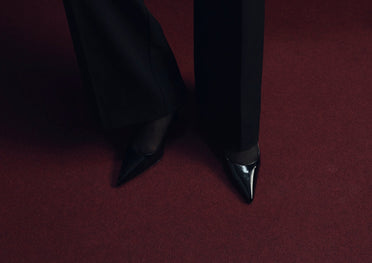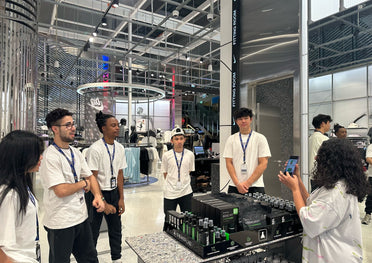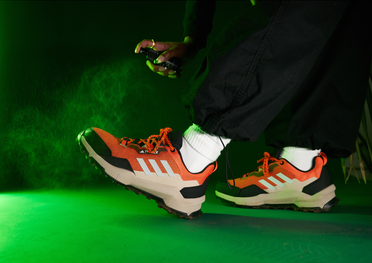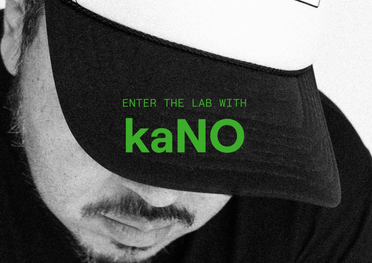How Sportswear is Leading Fashion’s Eco-Charge
[ Story ]
Article

Once seen as purely functional, sportswear is now the most progressive category in fashion’s sustainability revolution. From the giants; Nike, adidas, and Patagonia, to boundary-pushers like PANGAIA, A-COLD-WALL*, On Running, and Girlfriend Collective, the sector is pioneering materials innovation, ethical supply chains, and circular design models at a pace few others match.
This matters, because sportswear is no longer confined to the gym; it’s the uniform of everyday life, the aesthetic of innovation, and the meeting point of function, fashion, and ecological responsibility.


Sportswear brands have long advanced the innovative, lab-driven focus within their design departments, and what is remarkable is how seamlessly the practical demands of performance wear, durability, moisture-wicking, odour control, stretch, and support, align with the principles of sustainability. Activewear has to last, breathe, resist, and support the body under pressure.
These qualities naturally lend themselves to slower consumption cycles and longer product life, and when combined with the latest material science, bio-based nylons, regenerative cotton, algae foams, and recycled polyesters, this becomes a powerful driver of both technological innovation and environmental responsibility.





"The most progressive category in fashion’s sustainability revolution."
Brands like PANGAIA have led the charge across activewear and athleisure, popularising materials such as seaweed fibre and biodegradable nylon made from castor oil. You can check out the incredible array of next-gen, plant-derived materials here, collated into a cutting edge fabric system that truly showcases the future of fashion as led by science. Similarly, Girlfriend Collective has taken the feminine, athletic world by storm; turning post-consumer plastic bottles into supportive, soft workout sets, proving that waste can be reframed as a resource. As the first brand in this category in 2016 to apply recyclable principles, today they boast five core premium recycled fabrics: Compressive, FLOAT, Reset, Luxe, and SuperTrack. Meanwhile, Patagonia, the industry’s environmental conscience for decades, continues to lead in regenerative agriculture, recycled textiles, and supply chain transparency, earning them B Corp status and deep consumer loyalty.
On Running might be new kids on the block relative to some of the industry’s stalwart running giants, but they’re coming in stronger than ever; eliciting some of the most profound marketing and futuristic visions within the space. Their CloudTec soles and runner-first design, On has doubled down on sustainability through projects like the Cloudneo, a fully recyclable running shoe made from castor beans and distributed via a subscription model. When your pair wears out, you send them back to On, who recycle the materials and send you a new pair. This kind of circular system is fast becoming the holy grail of responsible fashion: eliminate waste, reduce raw resource extraction, and keep materials in play. We absolutely love to see it. Salomon, too, is redefining what technical gear can be. Their INDEX.03 sneaker uses a simplified construction of just two materials, TPU and polyester, and comes with a QR code to return the shoe for disassembly and recycling. The upper becomes new textile fibre, and the sole is repurposed into alpine ski boots. It’s a closed-loop system grounded in real material reuse, not just offsetting emissions or planting trees.
What makes this moment so significant is the collision of high-performance design with cultural style. No longer relegated to gyms or trail runs, performance fashion is dominating streetwear and even luxury aesthetics; meaning that these kinds of innovations are becoming commonplace for the everyday consumer, who are prizing technical application and design that benefits the planet. The rise of gorpcore has propelled brands like Salomon, Arc’teryx, and On Running into cult status, and their weatherproof, engineered gear is now worn by ultramarathoners, designers, stylists, and sneakerheads in the front rows of fashion week.
At the cutting edge of this fusion is A-COLD-WALL*, founded by designer Samuel Ross. His vision pushes beyond clothing into the realm of industrial design, sculpture, and social critique. A-COLD-WALL* has worked with Nike, Converse, and Dr. Martens, infusing every drop with utilitarian minimalism, often using sustainable materials like recycled nylons and plant-based fibres. In 2024, the brand released a collection with Japanese biotech company Spiber using, whose work we discussed here in 2024, writing that “Spiber's Brewed Protein™ materials, including fibres and films, are created through a fermentation process that involves brewing plant-based ingredients. This method uses microbial fermentation to produce protein polymers is a stunning example of what science is allowing us to achieve; literally, millions of years of natural protein evolution, into a simple yet daringly sophisticated scientific process, for the benefit of material futures.”
On Running might be new kids on the block relative to some of the industry’s stalwart running giants, but they’re coming in stronger than ever; eliciting some of the most profound marketing and futuristic visions within the space. Their CloudTec soles and runner-first design, On has doubled down on sustainability through projects like the Cloudneo, a fully recyclable running shoe made from castor beans and distributed via a subscription model. When your pair wears out, you send them back to On, who recycle the materials and send you a new pair. This kind of circular system is fast becoming the holy grail of responsible fashion: eliminate waste, reduce raw resource extraction, and keep materials in play. We absolutely love to see it. Salomon, too, is redefining what technical gear can be. Their INDEX.03 sneaker uses a simplified construction of just two materials, TPU and polyester, and comes with a QR code to return the shoe for disassembly and recycling. The upper becomes new textile fibre, and the sole is repurposed into alpine ski boots. It’s a closed-loop system grounded in real material reuse, not just offsetting emissions or planting trees.
What makes this moment so significant is the collision of high-performance design with cultural style. No longer relegated to gyms or trail runs, performance fashion is dominating streetwear and even luxury aesthetics; meaning that these kinds of innovations are becoming commonplace for the everyday consumer, who are prizing technical application and design that benefits the planet. The rise of gorpcore has propelled brands like Salomon, Arc’teryx, and On Running into cult status, and their weatherproof, engineered gear is now worn by ultramarathoners, designers, stylists, and sneakerheads in the front rows of fashion week.
At the cutting edge of this fusion is A-COLD-WALL*, founded by designer Samuel Ross. His vision pushes beyond clothing into the realm of industrial design, sculpture, and social critique. A-COLD-WALL* has worked with Nike, Converse, and Dr. Martens, infusing every drop with utilitarian minimalism, often using sustainable materials like recycled nylons and plant-based fibres. In 2024, the brand released a collection with Japanese biotech company Spiber using, whose work we discussed here in 2024, writing that “Spiber's Brewed Protein™ materials, including fibres and films, are created through a fermentation process that involves brewing plant-based ingredients. This method uses microbial fermentation to produce protein polymers is a stunning example of what science is allowing us to achieve; literally, millions of years of natural protein evolution, into a simple yet daringly sophisticated scientific process, for the benefit of material futures.”

We’re part of a movement that sees no tension between utility and style, between performance and responsibility.
As the line between performance wear and streetwear blurs, a new kind of consumer has emerged: one who values both high design and low impact. For these style-savvy environmentalists, what a garment is made of matters just as much as how it looks, and the pressure on fashion to clean up its act mounts, both from regulators and consumers, sportswear brands are becoming the unexpected leaders of this charge.
If you know us, you’ll know that at Sneaker LAB: innovation doesn’t stop at creation. We believe care is the next frontier in conscious fashion, and that what will contribute even further to these next-gen innovations is precisely how we can adapt to offer supporting care solutions.
Our range of cleaning and care products are formulated with biotechnology at their core. Rather than relying on harsh chemicals, our flagship sneaker cleaner uses probiotic bacteria to break down dirt and grime naturally, continuing to work for up to 72 hours after application. The result? Sneakers stay cleaner for longer, without damaging the materials or the planet. Caring for your gear is, in itself, an act of resistance against throwaway culture, as we’ve said before. We stand by this sentiment, more than ever; by extending the life of your sneakers and activewear, you reduce the need for constant replacement and protect the innovation embedded in every stitch, seam, and sole.
Even with all this progress, the sportswear sector is not without its challenges. The gains made by athletic brands could be undermined by sheer scale: when millions of garments are made, even eco-friendly materials add up to large footprints. Experts caution that while recycled synthetics are a step forward, they can’t be a permanent solution, particularly when microplastic shedding is still an issue. True sustainability requires addressing the root problem: overproduction and overconsumption. Less is more, and taking care of what you already own, remains our mantra. With every recyclable sneaker, every subscription model, and every water-based protector spray, we inch closer to a fashion industry that respects planetary boundaries. For The LAB community, this is a shift in consciousness for us. Together, we’re preserving innovation and protecting the planet.
In this world, athletic wear is a symbol of the transformative future we are heading towards—how cool is that?
[All photo credits awarded to respective brands].
If you know us, you’ll know that at Sneaker LAB: innovation doesn’t stop at creation. We believe care is the next frontier in conscious fashion, and that what will contribute even further to these next-gen innovations is precisely how we can adapt to offer supporting care solutions.
Our range of cleaning and care products are formulated with biotechnology at their core. Rather than relying on harsh chemicals, our flagship sneaker cleaner uses probiotic bacteria to break down dirt and grime naturally, continuing to work for up to 72 hours after application. The result? Sneakers stay cleaner for longer, without damaging the materials or the planet. Caring for your gear is, in itself, an act of resistance against throwaway culture, as we’ve said before. We stand by this sentiment, more than ever; by extending the life of your sneakers and activewear, you reduce the need for constant replacement and protect the innovation embedded in every stitch, seam, and sole.
Even with all this progress, the sportswear sector is not without its challenges. The gains made by athletic brands could be undermined by sheer scale: when millions of garments are made, even eco-friendly materials add up to large footprints. Experts caution that while recycled synthetics are a step forward, they can’t be a permanent solution, particularly when microplastic shedding is still an issue. True sustainability requires addressing the root problem: overproduction and overconsumption. Less is more, and taking care of what you already own, remains our mantra. With every recyclable sneaker, every subscription model, and every water-based protector spray, we inch closer to a fashion industry that respects planetary boundaries. For The LAB community, this is a shift in consciousness for us. Together, we’re preserving innovation and protecting the planet.
In this world, athletic wear is a symbol of the transformative future we are heading towards—how cool is that?
[All photo credits awarded to respective brands].


[ Follow ]



